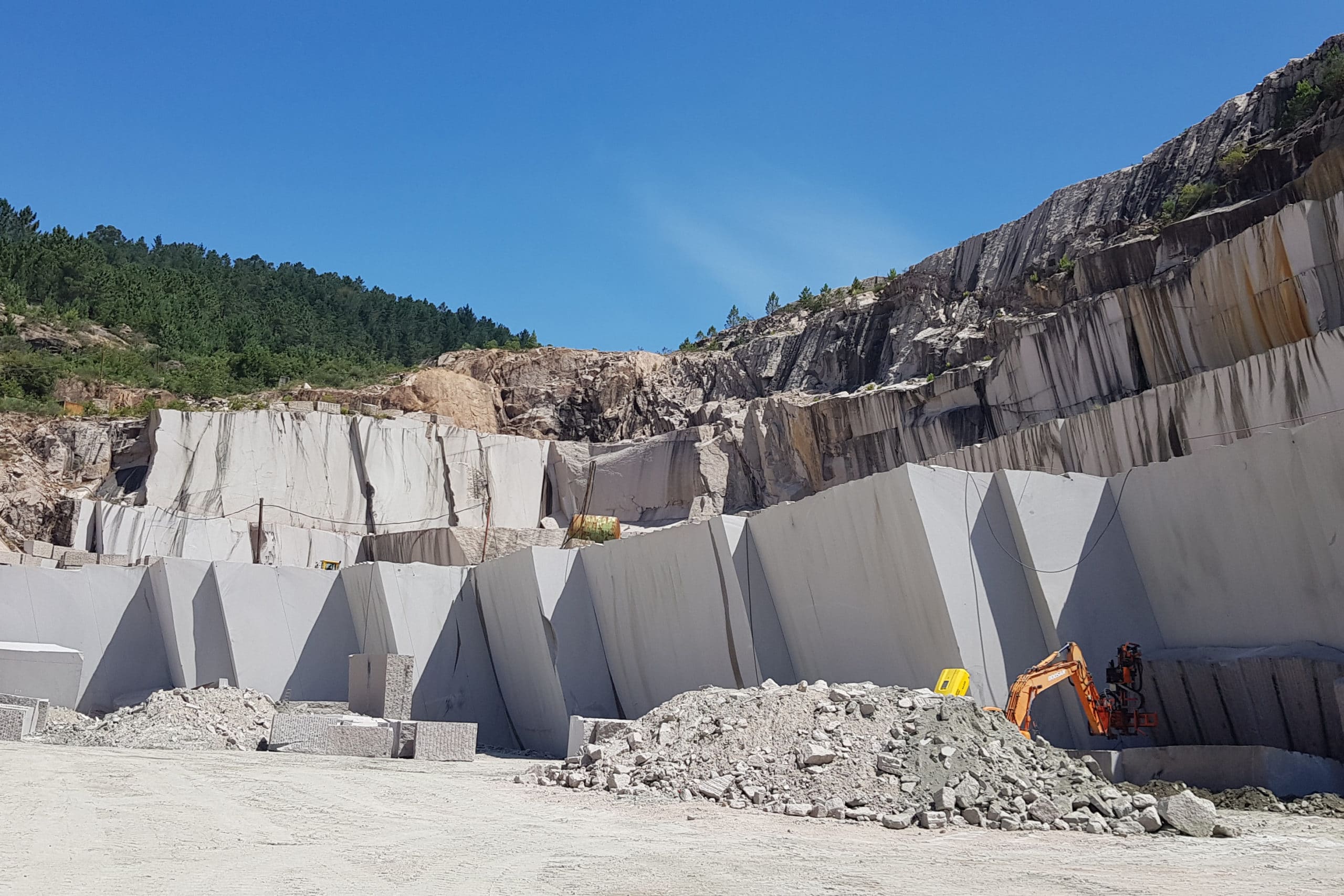Before shaping countertops, stairs or pavers, granite must go through a transformation process, in which quality control is present at each and every stage. In this article, we invite you to learn step by step about the granite transformation process, paying special attention to the cutting and polishing phases.
The extraction of granite from our quarries
Most of the granite we commercialize at Grupimar are extracted from our quarries in Spain, Portugal and Venezuela. This extraction is made by cutting the granite with diamond wire or disc cutters.
Both its extraction and final finishes, it’s essential to be carried out with cutting tools, suitable for the precision and quality that a stone of great value, such as granite, needs. For this reason, at Grupimar we invest in incorporating the latest technological advances in every phase of the granite transformation process.
Some of the granite marketed is in block form. Those that have passed the quality controls are sent to the sawing process. On the other hand, those that are fractured are usually destined for the production of other smaller products such as kerbstones, perpiaños or paving stones.
Granite transformation process: cutting
In order to make the best use of the material, it is essential to calculate precisely which size is the most suitable before cutting.
Traditionally, the granite blocks were fed into the looms. Nowadays, with the latest innovations, they are used with wire-cutting machines, capable of making much more precise cuts and customising them according to our customers’ requirements.
The pieces that come out of this phase of transformation usually have a natural finish, but a little rough. Although it is sometimes marketed as a final finish, it is more usual to apply other treatments depending on the final use that the client wishes to give to the granite slab.

Granite transformation process: polishing
One of the most frequent finishes is polishing. Using polishers and diamond sandpaper, a perfect finish is achieved. The result is a smooth, shiny surface, which brings out the natural shine and colour of the stone.
For outdoor use, a flamed treatment is usually applied, which gives the granite a rough and vitreous appearance and is anti-slip.
Among other possible finishes, some of the most outstanding ones are the following.
– Bush Hammered. This is obtained by striking the stone with the bush hammer, a steel hammer with serrated teeth. It is also known as carving.
– Honing. This is achieved by applying an abrasion process in polishing machines, without achieving a total polishing effect.
– Sawing. The granite is cut with a steel strip or diamond disc until a flat surface with a certain roughness is achieved.
– Shot blasting. This finish is achieved by projecting stainless steel shot on the surface of the granite. Depending on the pressure applied, a finer or coarser finish is achieved. The surface has a uniform appearance with slight peaks and valleys.
Once the polishing process is finished and after applying the corresponding treatment, the granite pieces are classified according to the type of finish and material.
Finally, they are packaged for subsequent marketing.
Did you like the post? Do you need advice to choose which type of granite is best suited to your construction project? Contact us or leave us a comment, we are looking forward to reading you!




